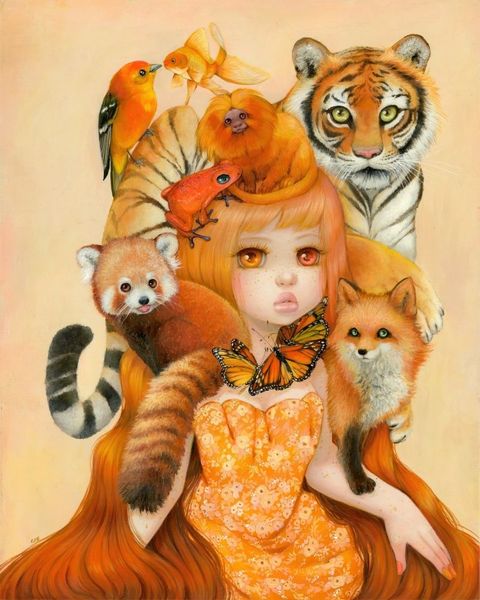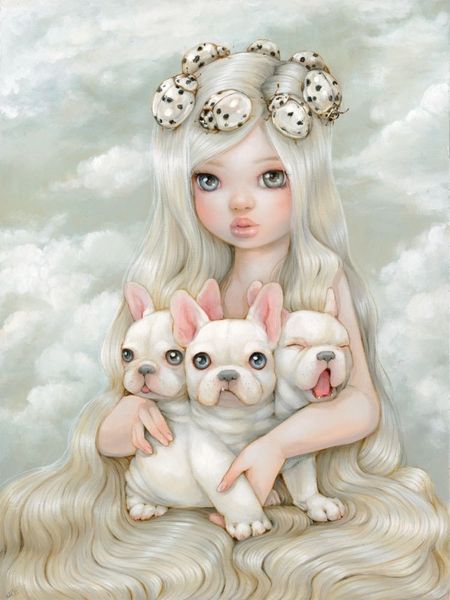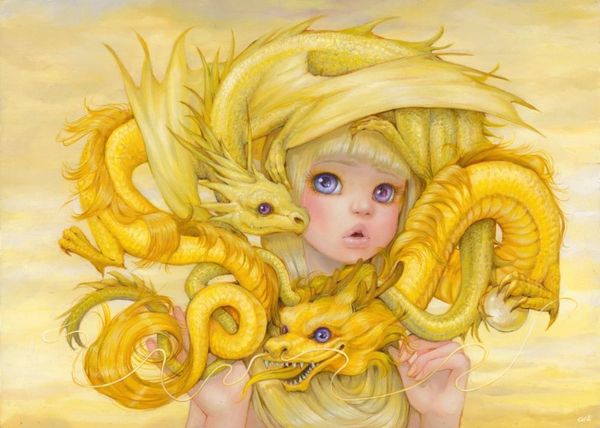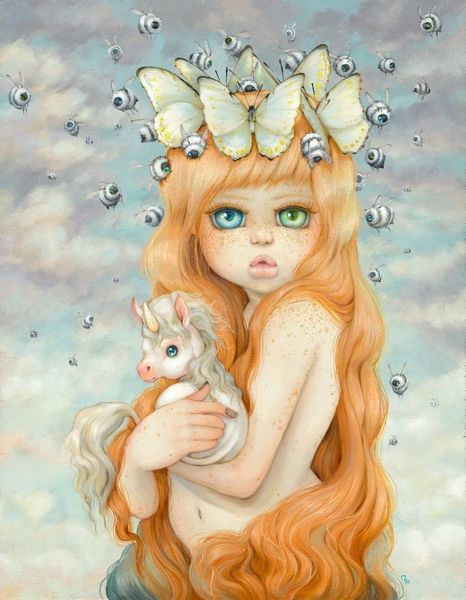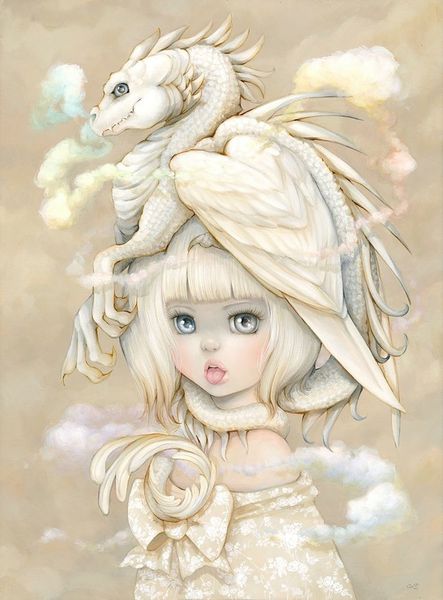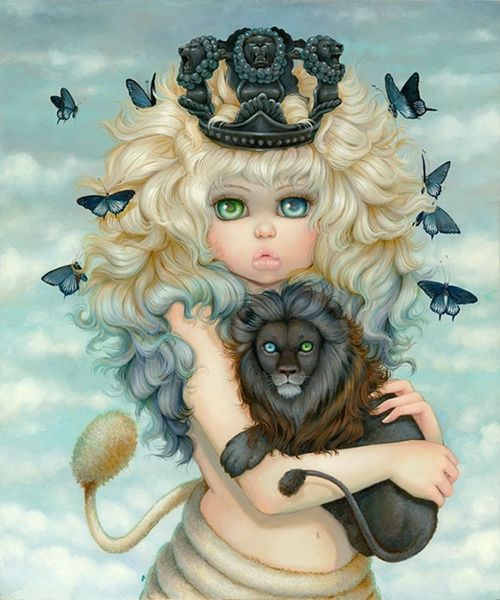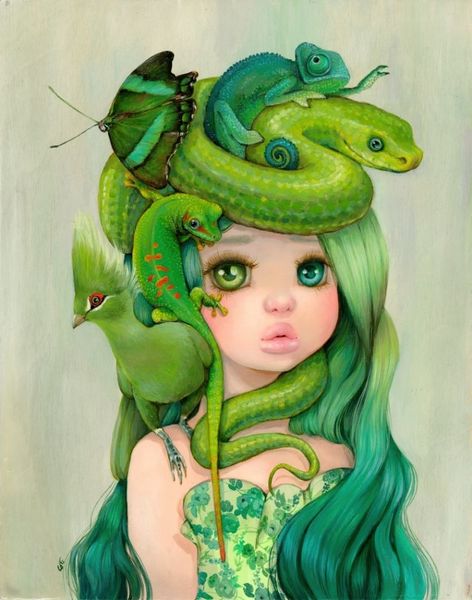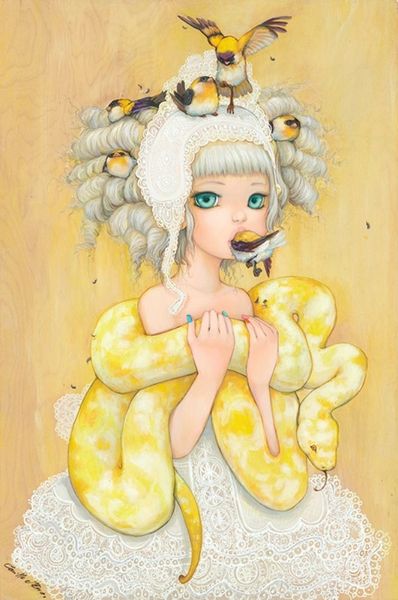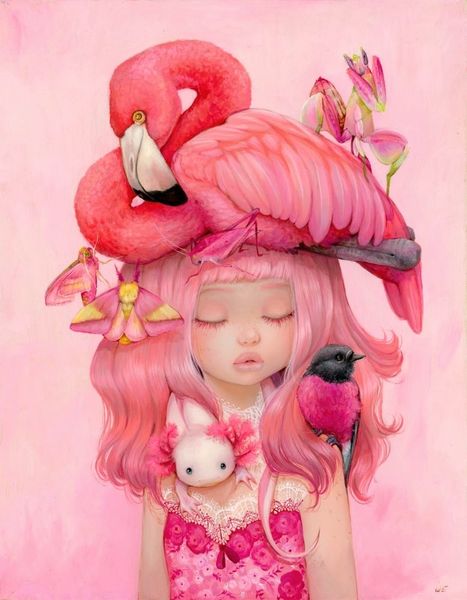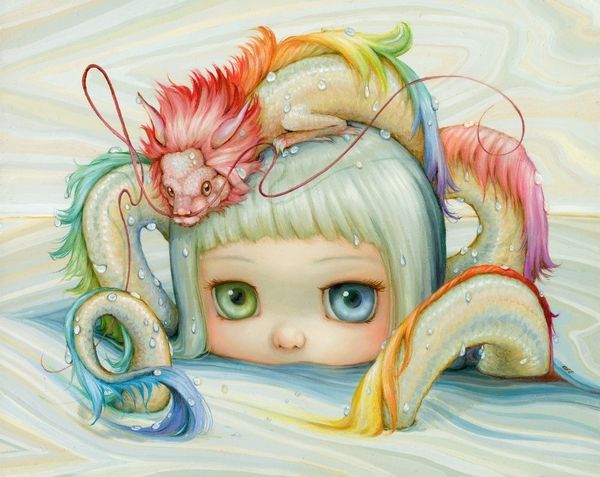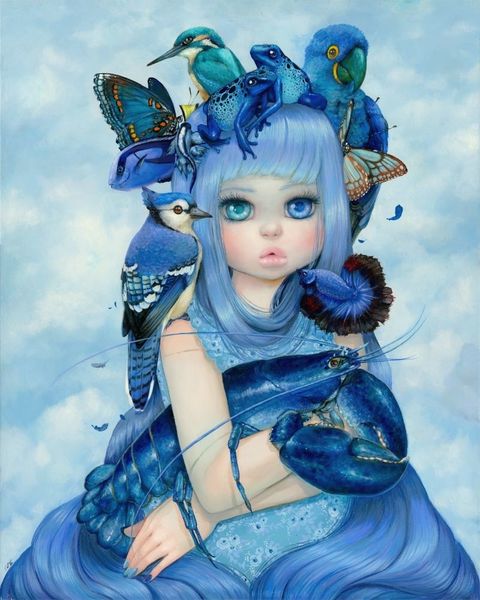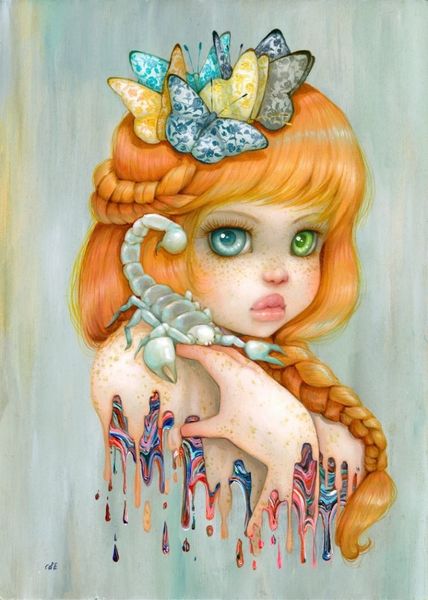
oil-paint
#
pop-surrealism
#
oil-paint
#
figuration
#
oil painting
#
animal portrait
#
surrealism
#
portrait art
#
realism
Copyright: Modern Artists: Artvee
Curator: Camilla d'Errico's "Dear Flavo" from 2020 is an oil painting rendered in hyperreal detail with distinct surrealist underpinnings. What are your initial thoughts? Editor: It strikes me as oddly melancholic. The overwhelming yellow palette is bright, but the girl's eyes, her slightly downturned lips, they suggest a hidden sorrow. And what is with the animals on her head and arms? Curator: The choice of oil paint is significant. It's a medium associated with the Old Masters, historically tied to wealth and patronage. D'Errico is invoking that tradition while depicting contemporary pop-surrealism. The material itself implies a connection to art history and the institutional power that defined it. Editor: Interesting. So, you're saying that she’s almost playing with the canon, subverting its expected themes with this doll-like figure and a quirky menagerie? Her posture is very formal, similar to renaissance portraits. What is the role of realism? Is it adding authenticity? Curator: Exactly. The technical skill in rendering the texture of the fur, the scales of the fish—that demands our attention. It forces us to confront the artifice, the sheer labor that goes into constructing this bizarre scene. There’s an implied commentary on commodity culture, on the manufactured nature of even our most "authentic" desires. Everything appears as a precious consumer good. Editor: It does make you wonder about the role of childhood and innocence here, doesn't it? The child almost feels posed like a collector or displayer of precious goods. Curator: And the "Dear Flavo" of the title? It suggests an intimate connection, perhaps even exploitation of resources—the child's relationship to the animals reflects our collective relationship with the natural world. Editor: Looking closer, all those figures—the animals and the child— are of different sizes and textures. What impact does it have on the symbolism? Curator: Consider the production process, all those brushstrokes adding up, building an assemblage. Also, do we buy that everything is randomly chosen? Nothing could be further from the truth; everything suggests artifice. Editor: I came in focused on a melancholic story being communicated. However, seeing the production efforts you highlighted helps recontextualize the work within commodity consumption. Curator: I've appreciated this shift from simply feeling to actively seeing what is materially there and how it implicates labor and a social framework for commodity appreciation.
Comments
No comments
Be the first to comment and join the conversation on the ultimate creative platform.
